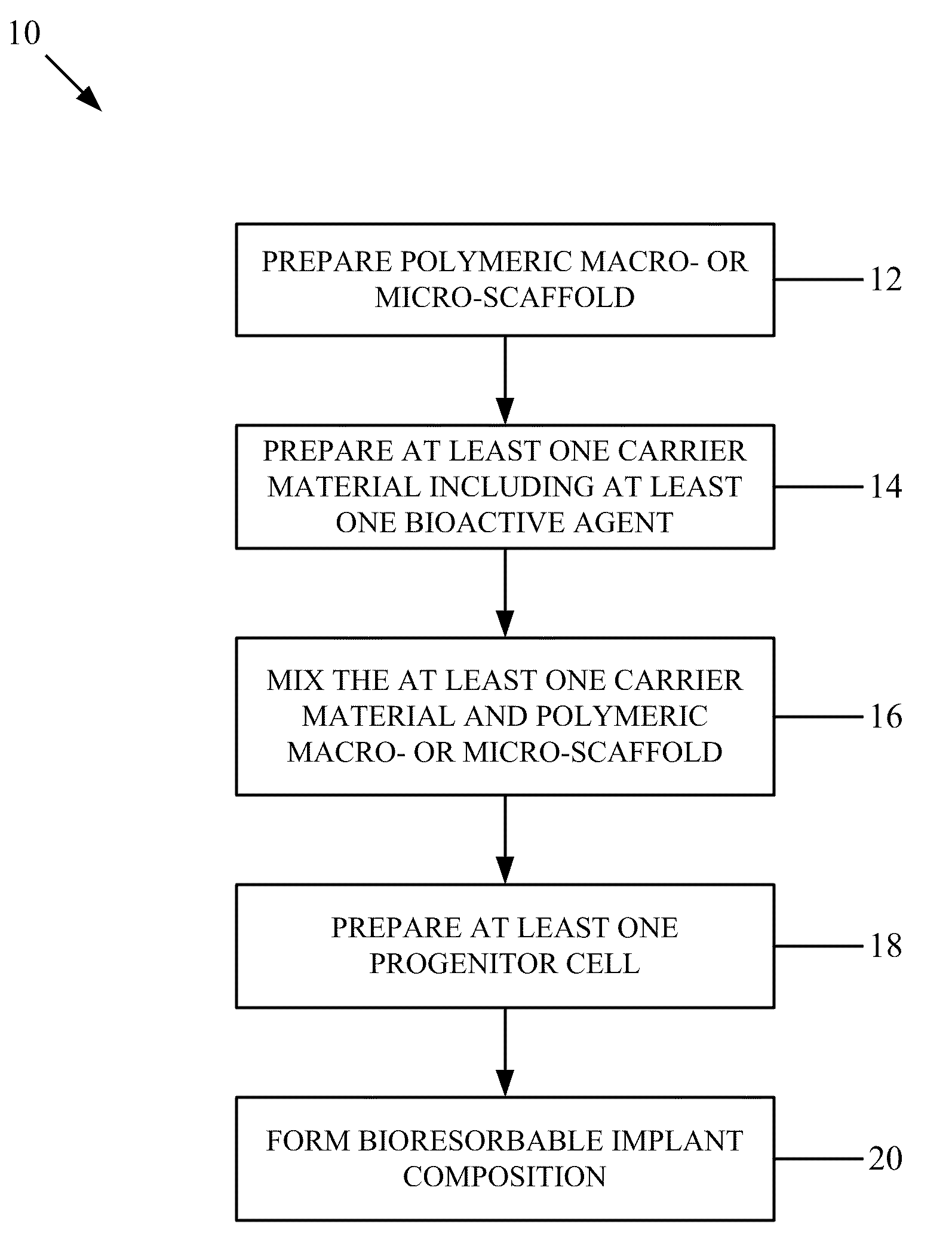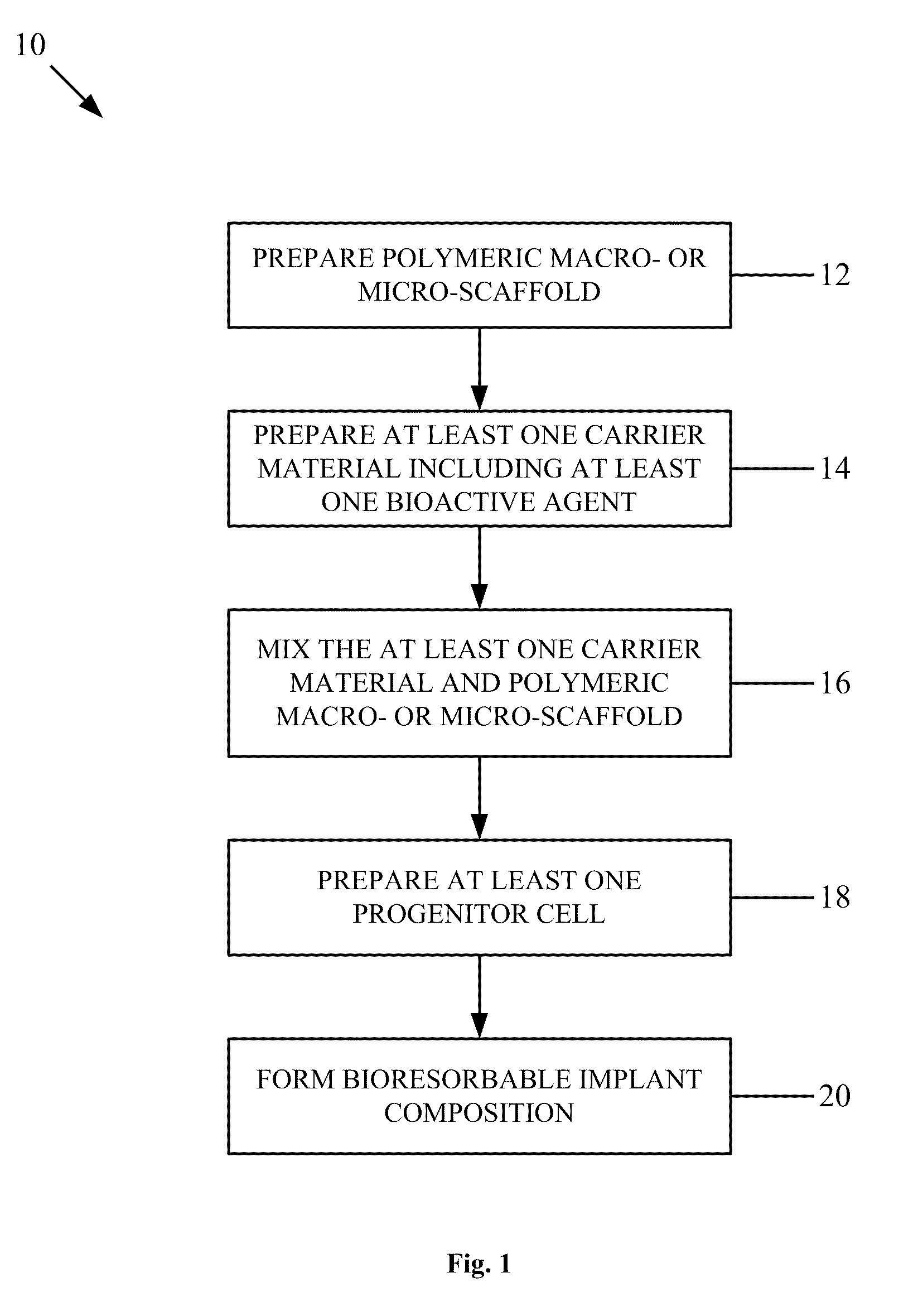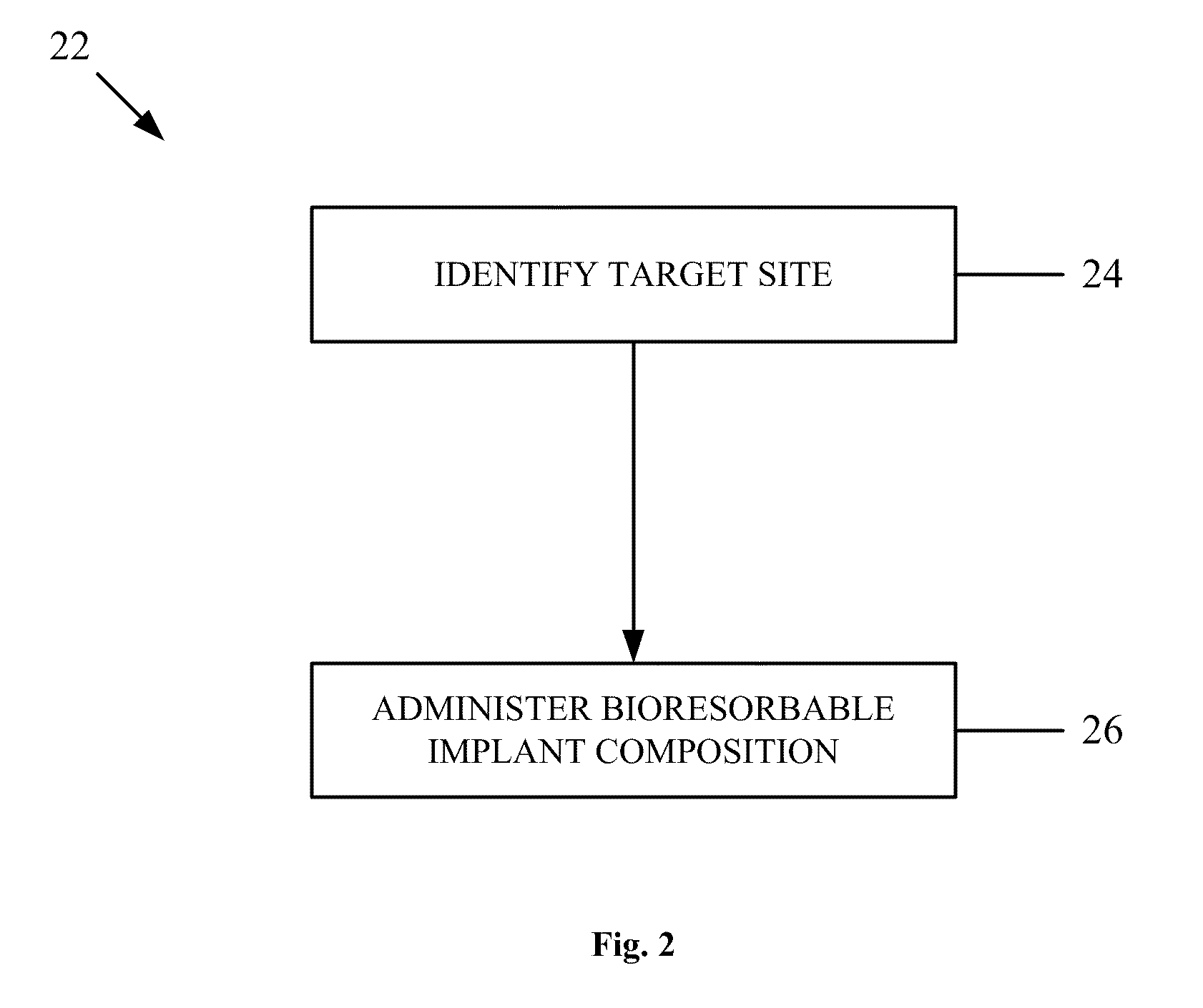Bioresorbable implant composition
- Summary
- Abstract
- Description
- Claims
- Application Information
AI Technical Summary
Benefits of technology
Problems solved by technology
Method used
Image
Examples
example 1
Alginate Preparation
[0102]Sodium alginate powder (FMC Biopolymers, Princeton, N.J.) was lyophilized until dry, purified by dialysis for 4 days, subjected to activated charcoal treatment, and then sterilized through a 0.22 μm filter. Some of the alginate was subjected to gamma irradiation at 5 MRad (Phoenix Lab, University of Michigan, Ann Arbor). The molecular weight was found to be 37,000 g / mol for irradiated alginate, and 121,000 g / mol for non-irradiated alginate as determined by SEC-MALS (FMC Biopolymers). A polypeptide having the amino acid sequence of SEQ ID NO: 1 (Commonwealth Biotechnologies, Richmond, Va.) was covalently coupled to the irradiated alginate as described by Luo D. et al., Nat. Biotechnol., 18(1):33-37 (2000). The plasmid pcDNA3.1 / Hygro / lacZ was obtained from Invitrogen (Carlsbad, Calif.). MC3T3-E1 Subclone 4 (ATCC #CRL-2593) cells were obtained from American Type Culture Collection (Manassas, Va.). Phosphate buffered saline (PBS) and (α-MEM were obtained from H...
example 2
Preparation and Characterization of Calcium-Phosphate DNA Nanoparticles
[0103]Two types of Calcium-Phosphate DNA Nanoparticles were fabricated: calcium phosphate core with DNA coating, and calcium phosphate-DNA core with BSA coating. CaP core-DNA coated particles were created by a slight modification to the previously described method of Sokolova, V. V. et al., Biomaterials, 27(16):3147-3153 (2006). Equal volumes of 18.7 mM CaCl2 (pH 9) and 11.23 mM Na2HPO4 (pH 9) were added simultaneously to a tube with a magnetic stir bar. The solution was mixed for 30 seconds and 200 μg of DNA was added to quench the crystallization by coating the crystals. CaP-DNA core / BSA coated particles were created by a modification of the method described by Li, Y et al., Int J Pharm., 269(1):61-70 (2004). 120 μg DNA was mixed with 100 μl 2 M CaCl2. This solution was added drop-wise to 1 ml of 2×HBS (pH 7) while stirring. Then, 780 μl of distilled water was immediately added. The mixture was stirred at room ...
example 3
In vitro Cell Transfection Using Calcium-Phosphate DNA Nanoparticles
[0106]CaP core-DNA coated and CaP-DNA core-BSA coated NPs were freshly prepared using DNA encoding for lacZ. MC3T3-E1 cells were seeded the day before transfection. For transfection, the cells were rinsed once with PBS, followed by the addition of serum-free media containing 10% v / v of NPs. The cells were incubated for 5 hours at 37° C., and then the media was removed and replaced with complete medium (α-MEM+10% FBS). 48 hours post-transfection, the cells were rinsed with PBS, fixed with 0.2% glutaraldehyde, and stained with X-Gal to assay lacZ expression. 24 hours after staining, the cells were rinsed with PBS and examined under the microscope to determine transfection efficiency.
PUM
| Property | Measurement | Unit |
|---|---|---|
| Biodegradability | aaaaa | aaaaa |
| Bioabsorbable | aaaaa | aaaaa |
| Bioactive | aaaaa | aaaaa |
Abstract
Description
Claims
Application Information
 Login to View More
Login to View More - R&D
- Intellectual Property
- Life Sciences
- Materials
- Tech Scout
- Unparalleled Data Quality
- Higher Quality Content
- 60% Fewer Hallucinations
Browse by: Latest US Patents, China's latest patents, Technical Efficacy Thesaurus, Application Domain, Technology Topic, Popular Technical Reports.
© 2025 PatSnap. All rights reserved.Legal|Privacy policy|Modern Slavery Act Transparency Statement|Sitemap|About US| Contact US: help@patsnap.com



